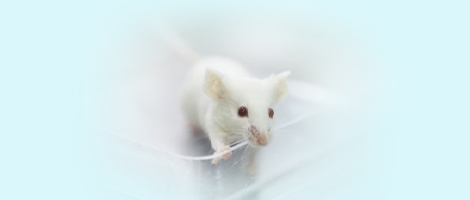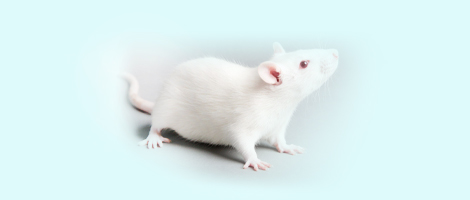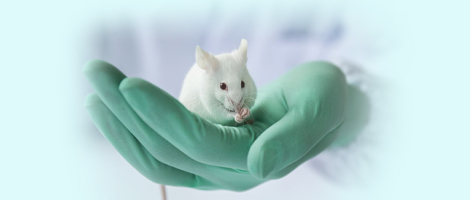| 1 |
帕提曼·米吉提,范余娟. 宫腔粘连的病因学研究及预防措施探讨[J]. 中国计划生育和妇产科, 2024, 16(7):32-35. DOI:10.3969/j.issn.1674-4020.2024.07.08 .
|
|
PATIMAN Mijiti, FAN YJ. Etiology and prevention of intrauterine adhesions [J]. Chinese Journal Of Family Planning & Gynecotokology,2024,16(7):32-35. DOI:10.3969/j.issn.1674-4020.2024.07.08 .
|
| 2 |
HAN Q, DU Y. Advances in the Application of Biomimetic Endometrium Interfaces for Uterine Bioengineering in Female Infertility[J]. Front Bioeng Biotechnol. 2020 Feb 28;8:153. DOI: 10.3389/fbioe.2020.00153 .
|
| 3 |
SANTAMARIA X, ISAACSON K, SIMÓN C. Asherman's Syndrome: it may not be all our fault. Hum Reprod[J]. 2018 Aug 1;33(8):1374-1380. DOI: 10.1093/humrep/dey232 .
|
| 4 |
SAHIN Ersoy G, ZOLBIN M M, COSAR E, MORIDI I, Mamillapalli R, Taylor HS. CXCL12 Promotes Stem Cell Recruitment and Uterine Repair after Injury in Asherman's Syndrome[J]. Mol Ther Methods Clin Dev. 2017 Jan 11;4:169-177. DOI: 10.1016/j.omtm.2017.01.001 .
|
| 5 |
REIN D T, SCHMIDT T, HESS A P, Volkmer A, Schöndorf T, Breidenbach M. Hysteroscopic management of residual trophoblastic tissue is superior to ultrasound-guided curettage[J]. J Minim Invasive Gynecol, 2011 Nov-Dec;18(6):774-8. DOI: 10.1016/j.jmig.2011.08.003 .
|
| 6 |
CAI Y, WU F, YU Y, et al. Porous scaffolds from droplet microfluidics for prevention of intrauterine adhesion[J]. Acta Biomater. 2019 Jan 15;84:222-230. DOI: 10.1016/j.actbio.2018.11.016 .
|
| 7 |
KOU L, JIANG X, XIAO S, et al. Therapeutic options and drug delivery strategies for the prevention of intrauterine adhesions[J]. J Control Release. 2020 Feb;318:25-37. DOI: 10.1016/j.jconrel.2019.12.007 .
|
| 8 |
黄少凤, 林忠, 朱雪红, 等. 宫腔粘连大鼠模型研究进展[J]. 实验动物与比较医学,2022,42(6):560-565. DOI:10.12300/j.issn.1674-5817.2022.025 .
|
|
HUANG S F, LIN Z, ZHU X H, et al. Research Progress in Rat Models of Intrauterine Adhesion [J]. Laboratory Animal and Comparative Medicine,2022,42(6):560-565. DOI:10.12300/j.issn.1674-5817.2022.025 .
|
| 9 |
梁姗姗, 植枝福, 黄滟岚. 宫腔粘连动物模型建立的研究进展[J]. 中华生殖与避孕杂志,2022,42(8):874-877. DOI:10.3760/cma.j.cn101441-20210320-00137 .
|
|
LIANG S S, ZHI Z F, HUANG Y L. Research progress on the establishment of animal model of intrauterine adhesion [J]. Chinese Journal of Reproduction and Contraception,2022,42(8):874-877. DOI:10.3760/cma.j.cn101441-20210320-00137 .
|
| 10 |
CAO Y, QI J, WANG J, al ea. Injectable "Homing-Like" Bioactive Short-Fibers for Endometrial Repair and Efficient Live Births[J]. Adv Sci (Weinh). 2024 May;11(20):e2306507. DOI: 10.1002/advs.202306507 .
|
| 11 |
QI J, LI X, CAO Y, et al. Locationally activated PRP via an injectable dual-network hydrogel for endometrial regeneration[J]. Biomaterials. 2024 Sep;309:122615. DOI: 10.1016/j.biomaterials.2024.122615 .
|
| 12 |
HUA Q, ZHANG Y, LI H, et al. Human umbilical cord blood-derived MSCs trans-differentiate into endometrial cells and regulate Th17/Treg balance through NF-κB signaling in rabbit intrauterine adhesions endometrium[J]. Stem Cell Res Ther. 2022 Jul 15;13(1):301. DOI: 10.1186/s13287-022-02990-1 .
|
| 13 |
LIANG Y, SHUAI Q, ZHANG X, et al. Incorporation of Decidual Stromal Cells Derived Exosomes in Sodium Alginate Hydrogel as an Innovative Therapeutic Strategy for Advancing Endometrial Regeneration and Reinstating Fertility[J]. Adv Healthc Mater. 2024 May;13(13):e2303674. DOI: 10.1002/adhm.202303674 .
|
| 14 |
ZHANG S, SUN Y, JIANG D, et al. Construction and Optimization of an Endometrial Injury Model in Mice by Transcervical Ethanol Perfusion[J]. Reprod Sci. 2021 Mar;28(3):693-702. DOI: 10.1007/s43032-020-00296-2 .
|
| 15 |
CAO Y, QI J, WANG J, et al. Injectable "Homing-Like" Bioactive Short-Fibers for Endometrial Repair and Efficient Live Births[J]. Adv Sci (Weinh). 2024;11(20):e2306507. DOI:10.1002/advs.202306507 .
|
| 16 |
LIANG S, HUANG Y, XIA Y, et al. Animal models in intrauterine adhesion research[J]. J Obstet Gynaecol. 2022 Nov;42(8):3409-3415. DOI: 10.1080/01443615.2022.2124854 .
|
| 17 |
陈醒, 毛乐乐, 刁翯, 等. 大鼠子宫腔粘连模型的构建与改进[J]. 解剖学报, 2019, 50(1):123-127. DOI:10.16098/j.issn.0529-1356.2019.01.021 .
|
|
CHEN X, MAO LL, DIAO H, et al. A rat model of intrauterine adhesion established by endometrial scraping[J]. Acta Anatomica Sinica,2019,50(1):123-127. DOI:10.16098/j.issn.0529-1356.2019.01.021 .
|
| 18 |
LI B, ZHANG Q, SUN J, LAI D. Human amniotic epithelial cells improve fertility in an intrauterine adhesion mouse model[J]. Stem Cell Res Ther. 2019 Aug 14;10(1):257. DOI: 10.1186/s13287-019-1368-9 .
|
| 19 |
PARK M, HONG S H, PARK S H, et al Perivascular Stem Cell-Derived Cyclophilin A Improves Uterine Environment with Asherman's Syndrome via HIF 1 α-Dependent Angiogenesis[J]. Mol Ther. 2020 Aug 5;28(8):1818-1832. DOI: 10.1016/j.ymthe.2020.05.015 .
|
| 20 |
LEE W L, LIU C H, CHENG M, et al. Focus on the Primary Prevention of Intrauterine Adhesions: Current Concept and Vision[J]. Int J Mol Sci. 2021 May 13;22(10):5175. DOI: 10.3390/ijms22105175 .
|
| 21 |
DAI Y, XIN L, HU S, et al. A construct of adipose-derived mesenchymal stem cells-laden collagen scaffold for fertility restoration by inhibiting fibrosis in a rat model of endometrial injury[J]. Regen Biomater. 2023 Sep 7;10:rbad080. DOI: 10.1093/rb/rbad080 .
|
| 22 |
TANG P M, NIKOLIC-PATERSON D J, LAN H Y. Macrophages: versatile players in renal inflammation and fibrosis[J]. Nat Rev Nephrol. 2019 Mar;15(3):144-158. DOI: 10.1038/s41581-019-0110-2 .
|
| 23 |
LIU F, ZHU Z J, LI P, et al. Creation of a female rabbit model for intrauterine adhesions using mechanical and infectious injury[J]. J Surg Res. 2013 Jul;183(1):296-303. DOI: 10.1016/j.jss.2012.11.009 .
|
| 24 |
XU X X, ZHANG S S, LIN H L, et al. Metformin Promotes Regeneration of the Injured Endometrium Via Inhibition of Endoplasmic Reticulum Stress-Induced Apoptosis[J]. Reprod Sci. 2019 Apr;26(4):560-568. DOI: 10.1177/1933719118804424 .
|
| 25 |
WEN J, HOU B, LIN W, et al. 3D-printed hydrogel scaffold-loaded granulocyte colony-stimulating factor sustained-release microspheres and their effect on endometrial regeneration[J]. Biomater Sci. 2022 Jun 14;10(12):3346-3358. DOI: 10.1039/d2bm00109h .
|
| 26 |
JANG H Y, MYOUNG S M, CHOE J M, et al. Effects of Autologous Platelet-Rich Plasma on Regeneration of Damaged Endometrium in Female Rats[J]. Yonsei Med J. 2017 Nov;58(6):1195-1203. DOI: 10.3349/ymj.2017.58.6.1195 .
|







 ), 宋宁2, 连文博1, 邵丛丛1, 顾文文1, 石燕1(
), 宋宁2, 连文博1, 邵丛丛1, 顾文文1, 石燕1( )
)
 ), SONGNing 2, LIAN Wenbo1, SHAO Congcong1, GU Wenwen1, SHI Yan1(
), SONGNing 2, LIAN Wenbo1, SHAO Congcong1, GU Wenwen1, SHI Yan1( )
)